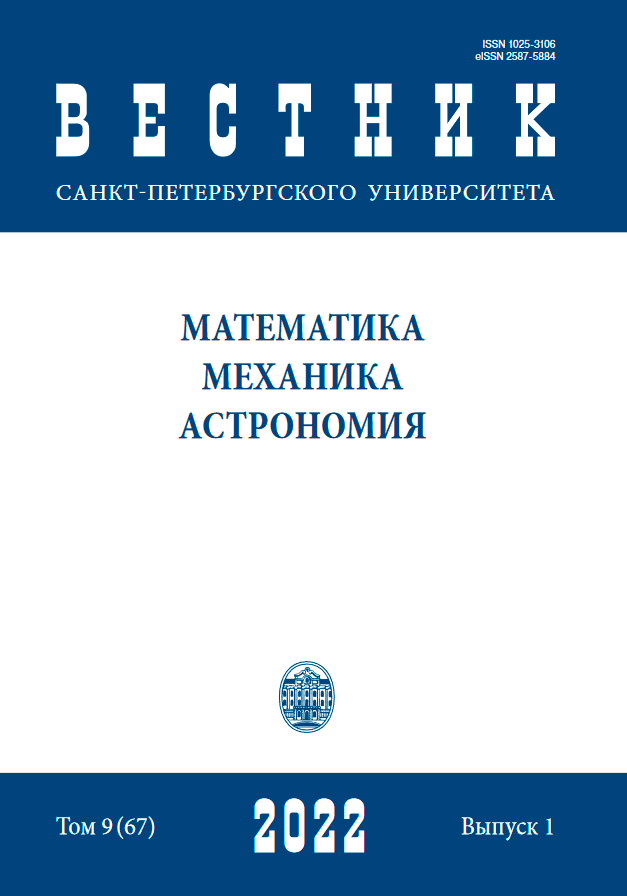Equilibria and oscillations in a reversible mechanical system
DOI:
https://doi.org/10.21638/spbu01.2022.115Abstract
The method of stochastic molecular modeling, developed by the authors for calculating the transport coefficients of rarefied gas in a free medium, is generalized to describe transport processes in confined conditions. The phase trajectories of the studied molecular system are simulated stochastically, and the simulation of the dynamics of the molecule is split into processes. First, its shift in the configuration space is realized, and then a possible collision with other molecules is played out. The calculation of all observables, in particular, the transport coefficients is carried out by averaging over an ensemble of independent phase trajectories. The interaction of gas molecules with the boundary is described by mirror or mirror-diffuse laws. The efficiency of the algorithm is demonstrated by calculating the selfdiffusion coefficient of argon in the nanochannel. The accuracy of modeling is investigated, its dependence on the number of particles and phase trajectories used for averaging. The viscosity of rarefied gases in the nanochannel has been systematically studied. It is shown that it is non-isotropic, and its difference along and across the channel is determined by the interaction of gas molecules with the channel walls. By changing the material of the walls, it is possible to significantly change the viscosity of the gas, and it can be several times greater than in volume, or less. The indicated anisotropy of viscosity is recorded not only in nano-, but also in microchannels.Keywords:
viscosity, diffusion, molecular modeling, nanochannel, rarefied gas, transfer processes
Downloads
References
Литература
References
Downloads
Published
How to Cite
Issue
Section
License
Articles of "Vestnik of Saint Petersburg University. Mathematics. Mechanics. Astronomy" are open access distributed under the terms of the License Agreement with Saint Petersburg State University, which permits to the authors unrestricted distribution and self-archiving free of charge.




